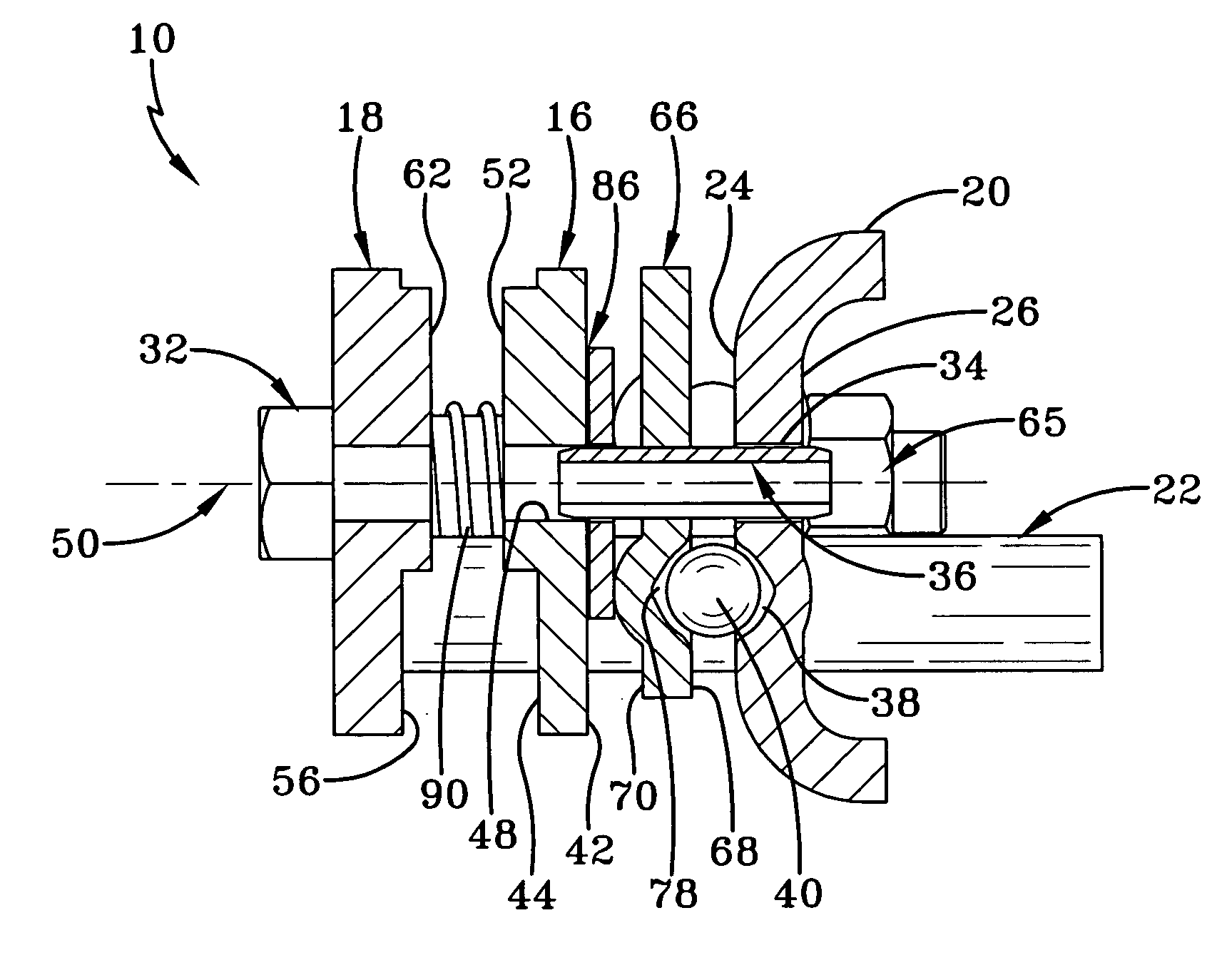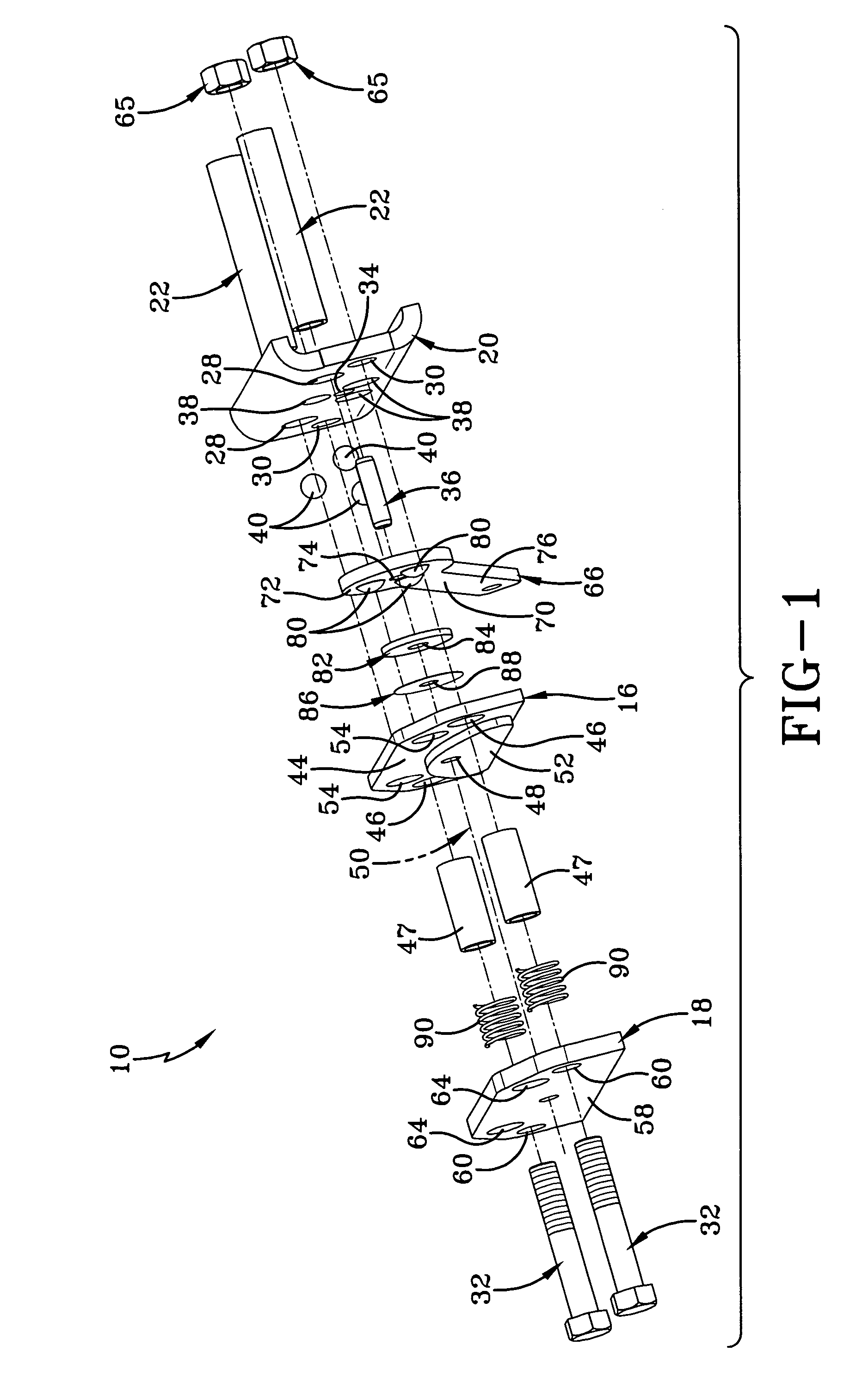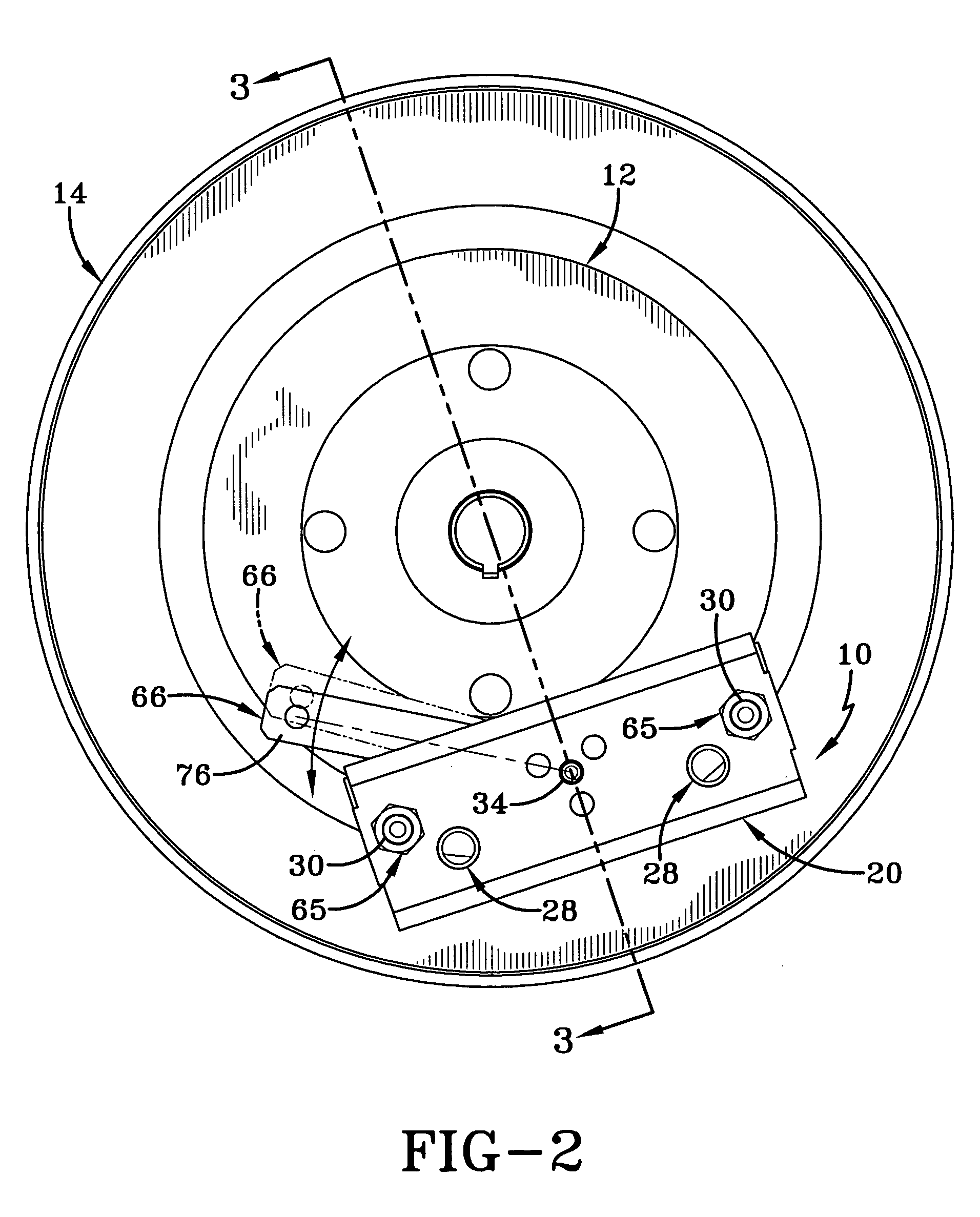Ball ramp caliper brake
a caliper brake and ball-type technology, applied in the field of brakes, can solve the problems of limiting the manufacture method of bridges, lack of efficiency, and bending moment of braking force applied, and achieve the effect of improving the wear of the brake pads, efficient and less costly construction
- Summary
- Abstract
- Description
- Claims
- Application Information
AI Technical Summary
Benefits of technology
Problems solved by technology
Method used
Image
Examples
Embodiment Construction
[0018] A brake assembly made in accordance with the present invention is indicated generally by the numeral 10. Referring to FIGS. 2 and 3, brake 10 is shown as being held at a constant radial position relative to a rotor 12 which is coupled to a wheel hub 14. When brake assembly 10 is actuated, a first stator 16 and a second stator 18, located on opposed sides of rotor 12, apply opposed coaxial pressure to the spinning rotor 12. Because brake assembly 10 is held rotationally stationary relative to rotor 12, torque is transferred from spinning rotor 12 to the vehicle frame (not shown), thereby braking the vehicle.
[0019] Referring now to FIGS. 1 and 4, brake assembly 10 includes a stationary actuator 20 which is generally shaped in an elongated “C” and mounts to the vehicle frame via a pair of mounting sleeves 22, as will hereinafter be discussed in more detail. Actuator 20 has a first surface 24 facing rotor 12 and a second surface 26 facing the vehicle frame. Actuator 20 is provid...
PUM
 Login to View More
Login to View More Abstract
Description
Claims
Application Information
 Login to View More
Login to View More - R&D
- Intellectual Property
- Life Sciences
- Materials
- Tech Scout
- Unparalleled Data Quality
- Higher Quality Content
- 60% Fewer Hallucinations
Browse by: Latest US Patents, China's latest patents, Technical Efficacy Thesaurus, Application Domain, Technology Topic, Popular Technical Reports.
© 2025 PatSnap. All rights reserved.Legal|Privacy policy|Modern Slavery Act Transparency Statement|Sitemap|About US| Contact US: help@patsnap.com



